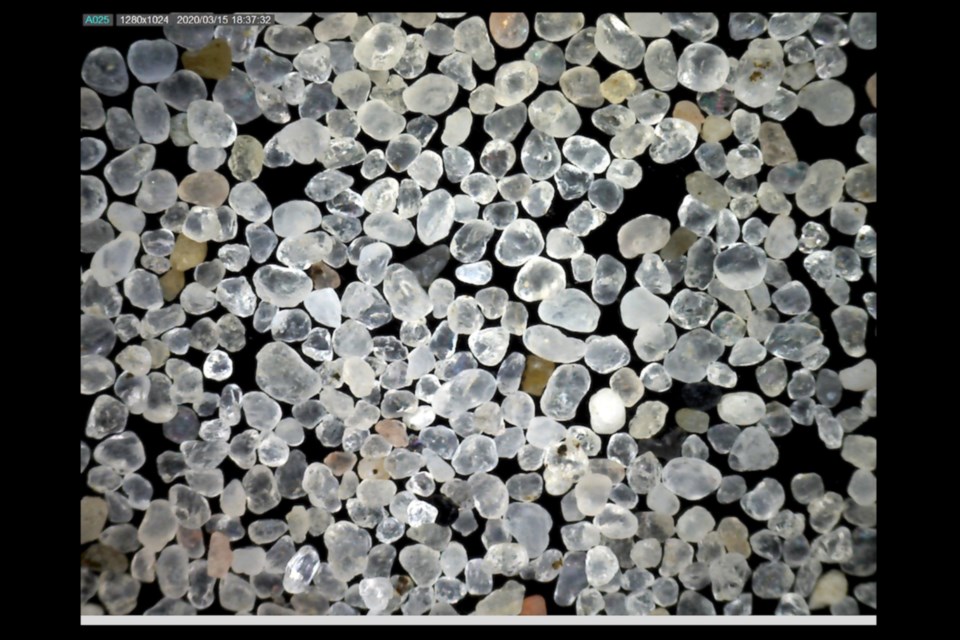ATHABASCA — For Athabasca Minerals (AMI) the Prosvita Sand Project location bordering Alberta Pacific Forest Industries (Al-Pac) has another benefit – reusing industrial wastewater.
In an agreement effective March 1 of this year, AMI and Al-Pac have agreed to the supply of treated industrial wastewater from Al-Pac for the sand project washing and sizing the domestic sand.
“The water sourced from Al-Pac will be used for two primary purposes,” said AMI senior project engineer Derek Delmar in an April 28 e-mail. “Firstly, it will be used to hydro-transport sand from the extraction site through transfer pipelines to the sand processing plant. Secondly, at the point of discharge within the processing plant, the same water will serve to wash the sand free of silts and clays.”
The washed sand will be stockpiled to feed the drying process and the water will be recovered and pumped to a settling tank where the silts and clays will be recovered while clarified, or clean, process water will be recovered and returned to the extraction site to repeat the process, said Delmar.
Some water will be lost during this cycle he said, and the losses occur through water that sticks to the washed sand in the stockpile. This water will evaporate into the atmosphere or through the drying process and the remaining losses will be through the water that leaves the settling tank as part of the discarded silt and clay.
“This water-clay-silt mixture is sent to reclamation ponds where the water evaporates over time,” said Delmar. “The evaporated water will need to be replenished. It is this water that will be imported from Al-Pac.”
The agreement supports the Prosvita Sand Project objective of establishing one of the greenest sand processing facilities in North America.
“Hydro-transporting the extracted sand between the extraction site and the processing plant – rather than using regular truck and shovel transportation – has several environmental benefits,” he said. “Most notably, it reduces greenhouse gases, it reduces the risk of road incidents by almost entirely eliminating heavy equipment operating between the extraction site and the processing plant, and it reduces the consumption of diesel, lubricant oils and other potential contaminants that would otherwise be consumed by this equipment during routine operations.”
The water recovery and re-use process contributes to the green aspect of the facility through two key ways Delmar explained.
“Firstly, we are maximizing the recovery of our process water for re-use in the process," he said. “Secondly, we will use treated wastewater from Al-Pac that has been recovered from their milling process. This water has been cleaned and purified by Al-Pac to such a high degree that it is suitable to return to the Athabasca River with no adverse effects on the environment.”
The Prosvita Project will utilize a small slipstream of the treated Al-Pac water, destined to be returned to the river, for processing the sand.
“This also enables us to not source our water for sand washing from boreholes that may otherwise have impacted the availability of ground water,” said Delmar.
After choosing not to develop its White Rabbit sand project southeast of the Town of Athabasca, Athabasca Minerals, through its subsidiary AMI Silica, filed an application for regulatory approval with Alberta Environment and Parks to develop the estimated 800,000 tonne per year wash-dry sand facility in June 2021.
The Prosvita Project is expected to process premium domestic sand from AMI's White Tail Sand Deposit, located south of Al-Pac's industrial operations, and is estimated to contain at least 12 million tonnes of recoverable silica which will be sorted to be used in a variety of products.



